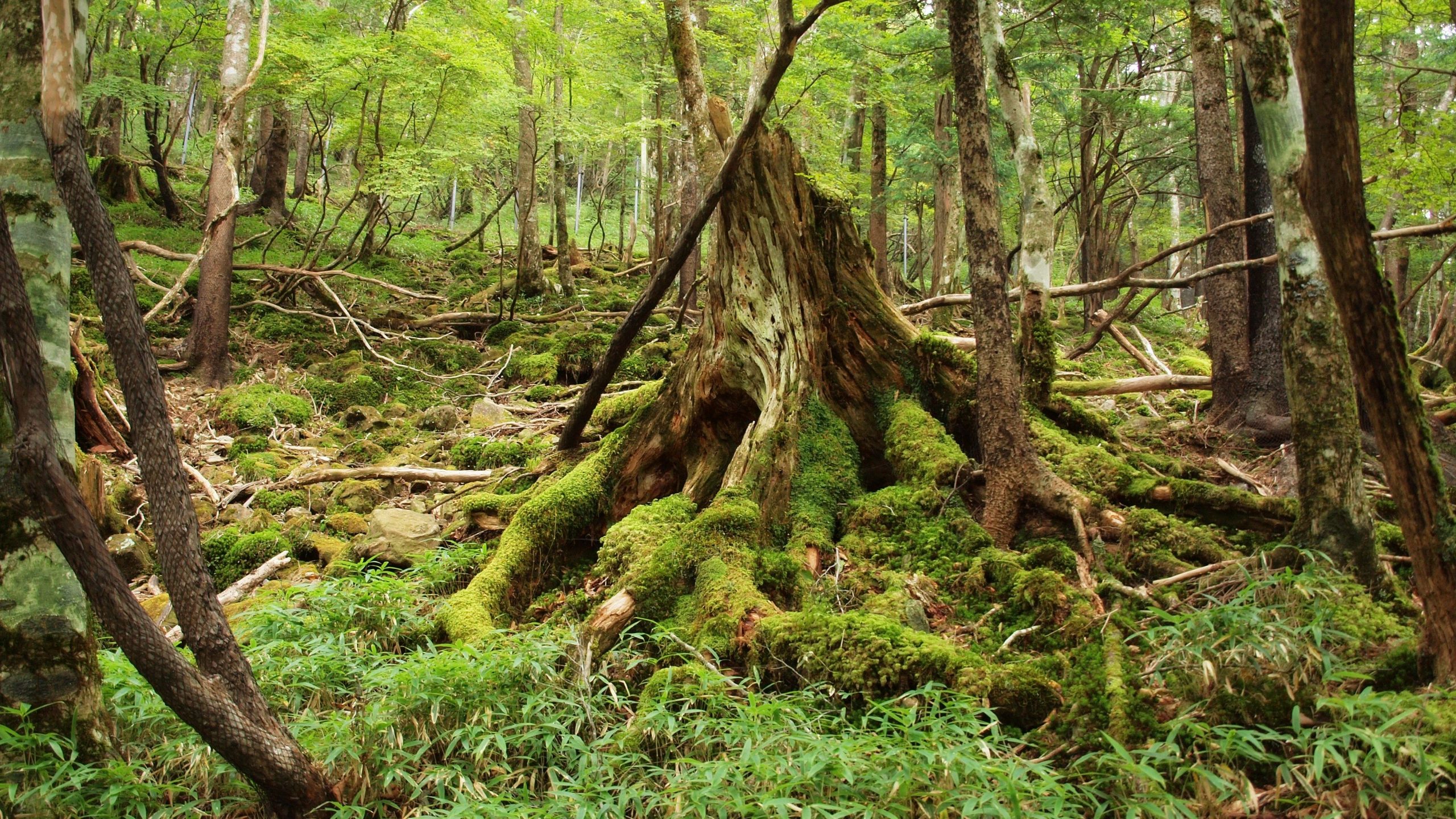A shot taken toward the top of Mount Odaigahara in Japan. (coniferconifer)
Every time I come home from my latest family trip, I feel like I need a vacation from my vacation. After flying for hours, driving from place to place, seeing the sights, and eating—and spending—a little too much, I return home without having relaxed as much as I had hoped. So I was intrigued when I heard about forest bathing. It’s not what you might think; it doesn’t actually involve bathing in the middle of a shady grove. Forest bathing is the English term for “shinrin-yoku,” a practice Japanese people invented in the 1980s as an approach to healing. All it involves is walking peacefully through a forest and allowing yourself to take in the natural atmosphere around you. Scientific studies claim that the practice has therapeutic benefits for the body and soul. Forest bathing could offer you the perfect respite during your next busy getaway (or after your next hectic day at the office).
How to Do It
We’ve all watched the sun set, driven through mountain canyons, gazed at trickling streams, or otherwise admired the beauty of nature. But forest bathing is more than just admiring—it’s about becoming one with the forest around you, and it requires engaging all your senses. Walk slowly. Inhale the earthy scents. Observe every color, the light and the shadows. Feel the damp air on your skin. Listen to the twigs crunching beneath your feet. The method is similar to other meditative practices: free your mind, breathe, and be aware.
You can wander the forest on your own (if you feel comfortable with your surroundings), with a friend, with a guide, or with a group. No matter whom you go with, let the focus be on your individual experience with nature. You might prepare to get in the right mindset by turning off loud music on the drive to the forest, wearing comfortable clothing and shoes, and meditating or practicing breathing techniques before you arrive at the forest. There’s no duration requirement for forest bathing, but you should give yourself enough time to really clear your mind and relax your body.
Where to Do It
Because the practice originated in Japan, the country offers multiple forest-bathing bases to help you reach your forest nirvana. However, shinrin-yoku has spread far beyond the island nation to become a global trend. Forest bathing groups gather throughout South Korea, China, Europe, and the United States. Dozens of spas include forest-bathing sessions and trained guides to direct you through the experience. If you live in a forested area, chances are there is a forest-bathing group within reach.
One of the great things about shinrin-yoku, though, is that you don’t need to locate a spa or pay to do it; you can try it yourself anywhere there are woods (accessible to the public—don’t get in trouble for trespassing!). If you’re having an especially stressful week, find the nearest forest and head over for a self-prescribed therapy session. Try to get far enough away from the city that bustling people and cars don’t interrupt your experience.
If you don’t live near a forest, find other ways to connect with nature, whether it’s at a park, in a desert, or on your balcony. When Atlantic reporter Rahawa Haile tried forest bathing, one of her instructors told her, “If people are going outside and centering themselves in nature, they’re forest bathing, even if they’re at the beach.” In an article, Haile continues, “He stressed that the most important thing was getting people to associate being in nature with feeling good.”
Benefits
Since the practice began, researchers have been studying the potential health benefits of forest bathing. The Shinrin Yoku organization’s website lists several of the scientifically proven benefits. Here are some of the benefits you might enjoy if you give it a try:
- Boosts to your immune system
- Lower blood pressure
- Less stress
- Better moods
- Increased focus
- Faster recovery from surgery or illness
- More energy
- Better sleep
The Shinrin Yoku organization even claims that the practice can help prevent cancer, because trees give off organic compounds that help our cells fight cancer. Scores of people who have tried the method have confirmed that they felt less stressed and more aware of the world around them. Katherine Pioli, who tried forest bathing in a grove near Salt Lake City, said after the experience, “I noticed how slow my breath felt. . . . Despite the craziness around me, I felt really good.” So does forest bathing really do all people claim it does? The only way to know is to try it yourself.
—McCall Rawlings
Sources

